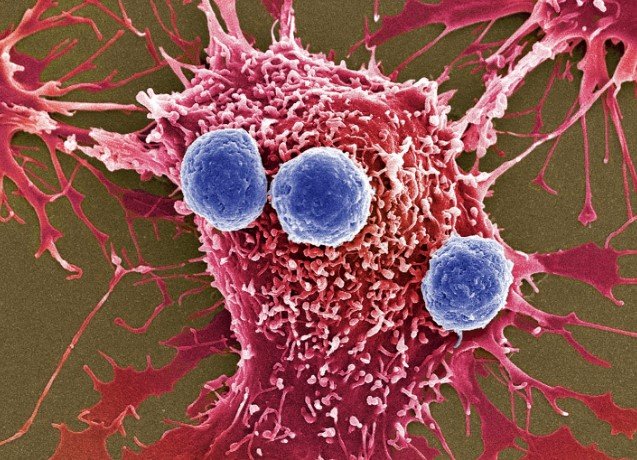Scientists are engineering bacteria to target and destroy cancer tumors, then self-destruct without harming healthy tissue. This breakthrough, highlighted in recent 2025 research, offers new hope for treating hard-to-reach cancers by turning bacteria into smart, living medicines.
Why Bacteria Could Revolutionize Cancer Treatment
Bacteria have long shown promise in fighting cancer due to their natural ability to seek out tumors. Over a century ago, doctors observed that some cancer patients improved after bacterial infections, sparking interest in this approach.
Today, researchers are building on that idea by genetically modifying bacteria to act as precise weapons. These microbes can navigate to solid tumors, which often have low oxygen and weak immune defenses, making them ideal hiding spots for bacteria.

This method addresses key problems with traditional treatments like chemotherapy and radiation, which can damage healthy cells and lead to resistance. Bacterial therapies aim to deliver drugs directly to tumors, boosting effectiveness while reducing side effects.
One major advantage is how bacteria activate the body’s immune system. They can trigger responses that attack cancer cells without relying solely on the patient’s immunity, which is crucial for those with weakened systems.
Latest 2025 Breakthroughs in Bacterial Cancer Therapy
In 2025, several exciting advances have pushed this field forward. A Japanese-led team developed a therapy using two types of bacteria that work together to destroy tumors, even in immune-compromised patients.
This approach, detailed in recent studies, allows bacteria to smuggle viruses into tumors, bypassing the immune system for a direct attack. Tests in mice showed significant tumor shrinkage without widespread side effects.
Another key development involves programmable bacteria that self-destruct after delivering treatment. Engineers have added genetic circuits so the bacteria release anti-cancer agents inside tumors, then break down and vanish, preventing long-term risks.
Chinese researchers created a strain called DB1 that selectively targets tumors and eliminates them by exploiting the cancer’s own environment. Human trials are planned, building on successful animal studies.
Here are some standout 2025 breakthroughs:
- A scaffold-based method from Japan enhances bacteria’s tumor-killing power and safety for large-scale production.
- MIT’s mRNA approach tricks cancer cells into self-destruction by activating immune pathways.
- Bacteria engineered to carry chemotherapy drugs directly to tumors, improving delivery in hard-to-treat cancers like colon and lung.
How Engineered Bacteria Work Step by Step
The process starts with selecting bacteria like Salmonella or Listeria, known for tumor-homing abilities. Scientists modify their genes to add features like drug delivery or immune activation.
Once injected, these bacteria travel through the bloodstream to tumors. Inside, they multiply and release payloads, such as toxins or signals that rally immune cells.
A clever twist in new designs is the self-destruct mechanism. Genetic programming ensures bacteria die off after the job, often by responding to tumor-specific signals.
This vanishing act reduces risks like infections or toxicity. In lab tests, treated mice showed no trace of the bacteria post-therapy, with tumors reduced by up to 80 percent in some cases.
Safety remains a focus. Researchers use weakened strains and add controls to prevent spread beyond tumors.
Challenges Facing Bacterial Cancer Therapies
Despite progress, hurdles remain. Not all tumors respond equally, and some patients might develop resistance to bacterial invasion.
Regulatory approval is another challenge. While bladder cancer treatments using bacteria are established, expanding to other types requires rigorous clinical trials to prove safety and efficacy.
Cost and scalability also matter. Producing engineered bacteria on a large scale needs efficient methods, but recent innovations like scaffold-based cultivation are addressing this.
Potential side effects include inflammation from immune activation, though early data shows these are manageable compared to traditional therapies.
Balancing effectiveness with minimal harm is key. Ongoing research aims to fine-tune bacteria for specific cancer types, like breast or pancreatic.
Real-World Applications and Patient Impact
Bacterial therapies are moving from labs to clinics. In 2025, several trials are underway for colon, lung, and skin cancers, with promising early results.
For patients, this could mean fewer invasive procedures. Instead of broad chemotherapy, targeted bacteria might offer personalized treatment based on tumor profiles.
One study showed bacteria boosting immunotherapy survival rates when combined with mRNA vaccines, nearly doubling outcomes in some cases.
| Cancer Type | Key Bacterial Therapy | 2025 Outcome Highlights |
|---|---|---|
| Bladder | Mycobacterium bovis | Standard treatment worldwide, high remission rates |
| Colon | Engineered Salmonella | Tumor shrinkage in mice, self-destruct feature added |
| Lung | DB1 strain | Selective targeting, plans for human trials |
| Skin | Proteus mirabilis combo | Immune-independent destruction, reduced side effects |
This table shows how therapies are tailored to different cancers, with 2025 data emphasizing improved targeting.
Future Outlook for Living Medicines in Cancer Care
Looking ahead, experts predict bacterial therapies could become a staple in cancer care by the 2030s. Combining them with AI for precise programming might create even smarter treatments.
Integration with other advances, like gene editing, could enhance their power. For instance, bacteria might one day carry CRISPR tools to edit cancer genes directly.
As research evolves, the goal is accessible, effective options for all patients. With global funding and collaborations, these living medicines are set to transform oncology.
What do you think about using bacteria to fight cancer? Share your thoughts in the comments and spread this article to raise awareness about these exciting developments.








